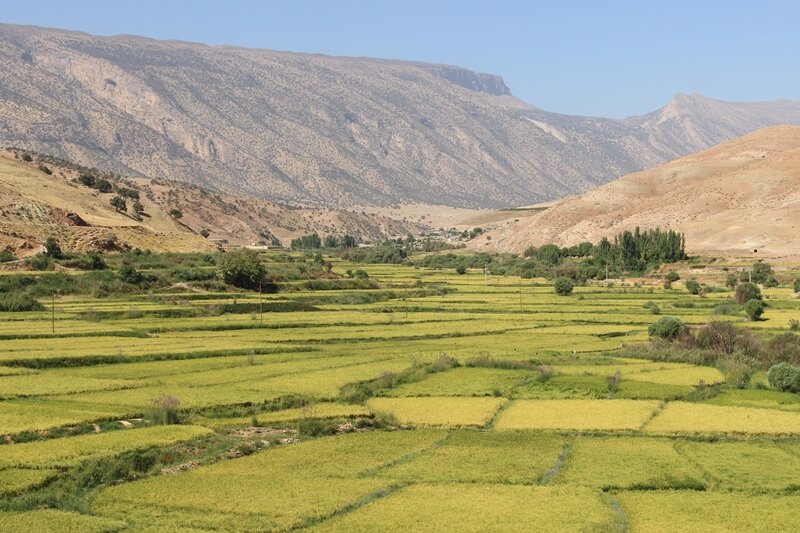Rice paddy fields, an untapped tourism potential

TEHRAN – Agritourism, a relatively new branch of the tourism industry in which tourists stay with local people in rural areas, could be developed in Ilam province due to its mild climate, which makes it a suitable place to cultivate a variety of agricultural products such as rice.
Sirvan and Chardavol counties on the lesser-known western province have the potential to become agritourism hubs, as more than 3,000 hectares of their lands are dedicated to the cultivation of Anbarbu rice, from which about 10,000 tons of the crop is harvested annually.
Anbarbu rice is one of the famous agricultural products of the province, which has an extraordinary aroma and taste and has its own fans, and due to its high quality and flavor, it is considered one of the local souvenirs of Ilam.
The Anbarbu rice harvest festival, which is one of the tourism events registered on the province’s tourism calendar, could be effective in attracting more domestic and foreign tourists to the region.
Considering that agritourism and farm/ranch recreation is not limited to visiting farms and paddy fields, but also tourists participate in the harvesting of agricultural products and do activities conducted on private agricultural lands, which might include fee-hunting and fishing, overnight stays and educational activities, this branch of tourism could be intriguing for many tourists.
Boosting agritourism in the region could help the development of villages and rural areas as well as their economic prosperity by creating a source of income for the villagers.
Holding some customs and celebrations that are done during the harvest can also be effective in promoting agritourism.
Back in June, deputy tourism chief Vali Teymouri announced that permits would be granted to eligible tour operators to launch their agritourism businesses, aiming to set certain standards in a move to ensure the quality of such services in the country.
Agritourism is a subset of a larger industry called rural tourism that includes resorts, off-site farmers' markets, non-profit agricultural tours, and other leisure and hospitality businesses that attract visitors to the countryside.
Rural tourism, however, differs from agritourism in two ways. First, rural tourism enterprises do not necessarily occur on a farm or ranch, or at an agricultural plant, they do not generate supplemental income for the agricultural enterprise.
To cite an example, we could refer to saffron farms in northeast Iran that are going to fame as a new destination for agritourism. Iranian Saffron is known as the “red gold”, saffron is a magical ingredient in Persian culture, from aromatic foods and colorful desserts to physical and spiritual medicine.
ABU/MG
Leave a Comment